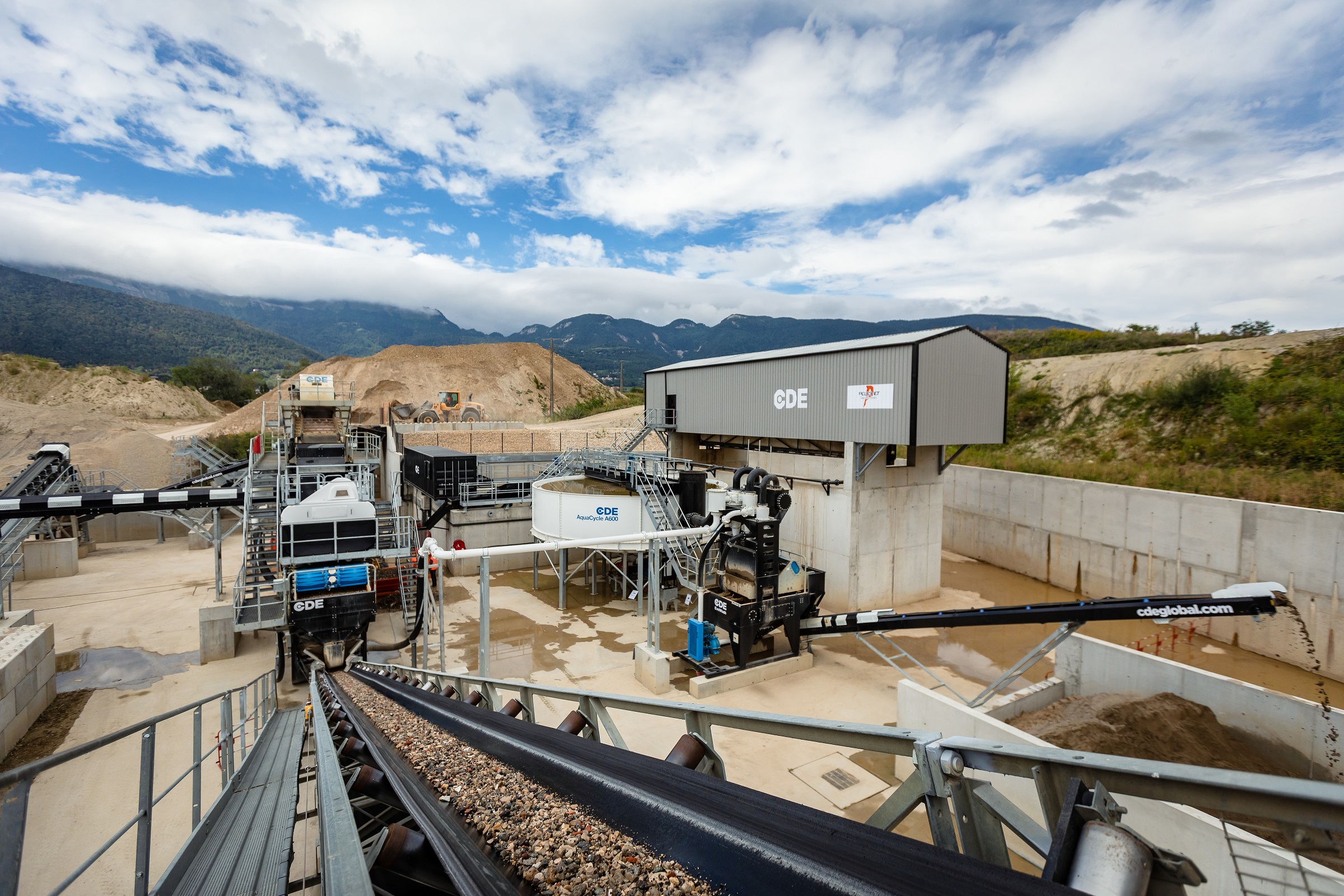She was speaking virtually to industry professionals as part of a major two-day symposium for the materials processing industry programmed by CDE, the leading manufacturer of wet processing technologies.
“We’re talking about massive, massive volumes here,” Pereira said. “Sand and gravel today account for the largest volumes of solid material extracted globally.”
The demand, she said, is currently estimated to be about 50 billion tonnes per year, an average of about 18kg per person per day.
Engineering Insights
Hers was one of the keynotes from CDE’s recent Engineering Insights symposium, which took place virtually from 14-15 October. The event was in response to the desire for industry professionals around the world to come together once again as the industry often does at one of its many international tradeshows.
To maintain momentum and to support the continued progression of the industry, CDE, harnessing the global reach offered by digital conferencing, programmed its Engineering Insights symposium to deliver the conference experience virtually.
Across two days, CDE experts, together with a host of guests and industry figures, facilitated a series of dynamic, educational and informative presentations and panel discussions covering multiple sectors, including sand and aggregates, construction and demolition waste recycling, industrial sands, mining, and wastewater.
C&D waste and the circular economy
Exploring the topic of C&D waste recycling and the potential for materials producers to improve their bottom line through wet processing, Marc Sopransi, Business Development Manager – France at CDE, outlined how CDE engineers solutions designed to respond to the commercial and environmental objectives of its customers.
Marc, who works closely with C&D waste recycling companies to help them unlock value from their challenging waste material, says the session highlights the potential of inert and other waste material when supported with the appropriate processes.
“Urban centres are crying out for high quality construction materials and the needs of these construction companies can be met with recycled sand and aggregates recovered from inert waste. Traditionally, this material would be destined for landfill, but with the right technology and expertise this material can be recovered to a specification equal to that of virgin quarried materials.”
“CDE technology is used to divert of millions of tonnes of material from landfill every year, so far we’ve helped divert over 80 million tonnes, and this material is being used for new construction and infrastructure projects,” he adds.
“Sand, which is a very delicate product to control in terms of quality and consistency, can be produced in-spec with CDE wet processing technology.”
Pélichet Albert SA, the public works contractor and aggregates producer based in western France, operates a circular economy business model with operations in demolition, groundworks, landfill and C&D waste recycling. With the support of CDE wet processing technology, Pélichet is diverting up to an estimated 200,000 tonnes per year of C&D waste from landfill. The engineered-to-order plant is supporting Pélichet to produce high quality competitive and sustainable sand and aggregates for use in concrete mix and drainage systems, ensuring valuable resources are returned to the construction industry.
Waste recycling in the EU
In a similar session outlining the state-of-play and the challenges ahead for C&D waste recycling in Europe, Vincent Basuyau, a European Commission Policy Officer for energy-intensive industries and raw materials, said C&D waste is the biggest opportunity for the circular economy.
He said there is “very high potential for recycling of construction and demolition waste into valuable secondary construction materials.”
Discussing the implementation of the Waste Framework Directive (WFD 2008/98/EC), he highlighted that EU countries are on track to fulfil article 11 of the directive, which outlines a minimum recovery target of 70% by 2020.
However, despite this, he said, “we have missed the key concept of the circular economy” when evaluating its success.
Looking at the data “we see that most recovered C&D waste has been recovered for low-grade applications.”
He said this is something that needs developed further to ensure that C&D waste materials are recovered to a specification that retains their value and characteristics, making them more suitable for higher-value applications than those which are currently being observed.
Drawing attention to revisions to the directive made in 2018, he added that reaching the 70% recovery rate is not enough and that countries must also tackle the issue of waste generation.
Sharing knowledge
The packed two-day programme featured almost 90 sessions involving over 100 speakers. Stefan Hunger, Regional Manager Europe and Russia at CDE, says: “In these unique and challenging times there are many restrictions that have prevented CDE, our customers, and others in materials processing from coming together at industry events to discuss the prevalent issues of the day and the latest technological advances.
“Utilising our global network, we decided to programme the major two-day Engineering Insights symposium which proved to be a huge success with almost 1,500 industry professionals from around the world registering.
“We firmly believe this shared approach to knowledge and expertise is a better way to aid the progression of the industry.”
He says it is important to ensure these discussions can continue even though the industry is unable to come together in the same space.
“The challenges facing our industry – sand depletion, water management, sustainable mining and much more – have not gone away. As an industry leader in these fields we felt a responsibility to convene the very best in the business to facilitate these important conversations.”






